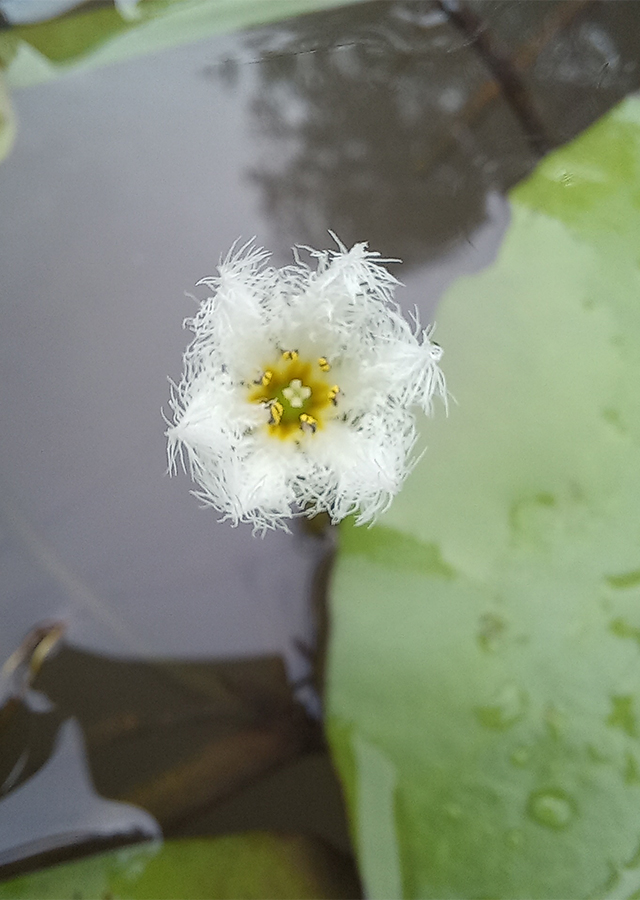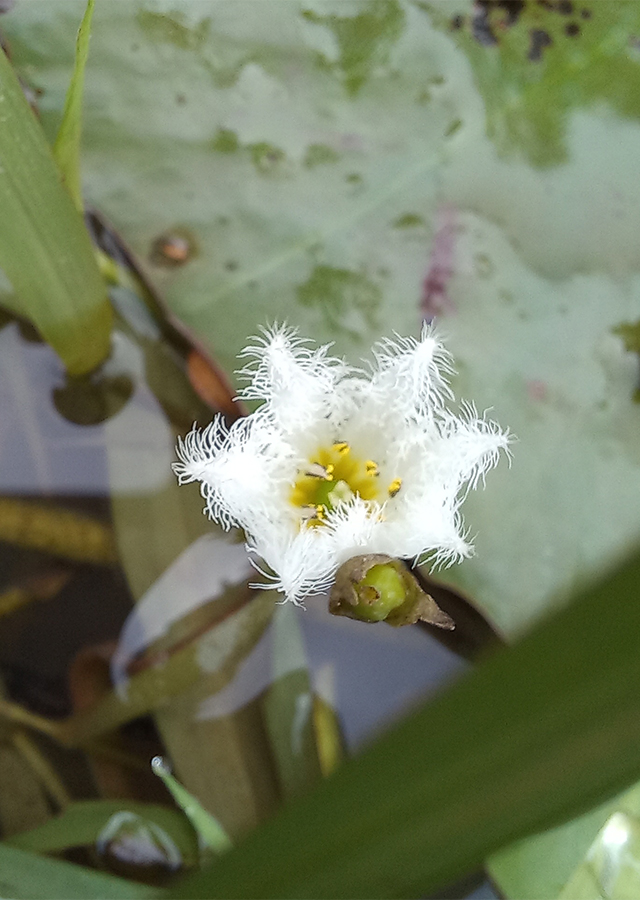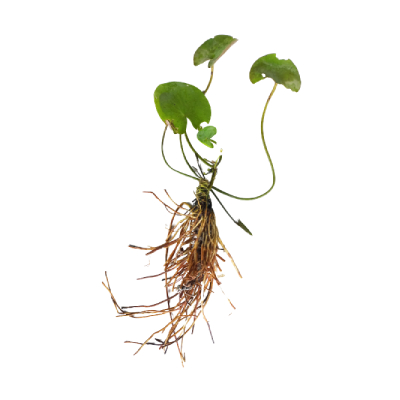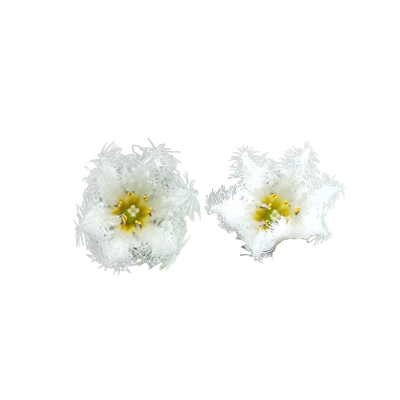Water Snowflake
Nymphoides indica (L.) Kuntze
Menyanthaceae
Location in our garden
Aquatic



Synonym
Limnanthemum calycinum Miq.
Limnanthemum forsteri Seem.
Menyathes brasilica Vell.
Habitus
Aquatic. An evergreen tender-aquatic perennial plant growing up to 2 m.
Part Used
Leaves
The Whole Plant
Rhizome
Growing Requirements
Full Sunshine
Need Shade
Habitat
Aquatic
Overview
The plant is native to Tropical & Subtropical Asia to South-West Pacific. It sometimes harvested from the wild for local use as a food. Young leaves and rhizomes are edible. It is often grown in ponds and boggy areas as an ornamental. It has become naturalized in Southern Florida.
Vernacular Names
Kumudini (Hindi-India).
Agroecology
Nymphoides indica grows in shallow, stagnant water, pools, flooded rice fields, and margins of lakes, up to 1,900 m altitude. Succeeds in full sun and partial shade. Prefers a rich, sandy loam. Plants grow best when the roots are submerged in 30-60 cm of water.
Morphology
- Rhizome - thick, rooted in the bottom soils and at stem nodes.
- Stem - non-woody consisting of a horizontally growing underground stem (rhizome).
- Leaves - alternate, shortly-stalked leaves, thickly fleshy leaf blades that float on water, are almost circular, 6-40 by 3-24 cm, with broad, heart-shaped bases, and smooth margins, glossy green above, pale, and gland dotted below.
- Fruit - ellipsoid, 6,8-8 by 3-5 mm, and contain many lens-shaped seeds.
- Seeds - pale brown, spherical, smooth and less than 1,5 mm wide.
Cultivation
Plants can reproduce in several ways. Vegetative propagation from tubers, daughter plants, rhizomes and leaves (each leaf can produce a plantlet). Plants also reproduce sexually from seed (generative propagation). Plantlets, leaves, and fragments can drift when detached from the underwater stem and move to infest new locations. Plant seeds are likely spread from waterbody to waterbody attached to water birds and mammals.
Chemical Constituents
5 lipophilic compounds (azelaic (nonanedioic) acid and 4-methyl-heptanedioic acid, hexadecanoic and stearic acid and the fatty alcohol hexadecanol), 3 seco-iridoids (7-epiexaltoside, 6″,7″-dihydro-7-epiexaltoside and menthiafolin), 3 flavonoids (3,7-di-O-methylquercetin-4'-O-β-glucoside, 3-O-methylquercetin-7-O-β-glucoside and 3,7-di-O-methylquercetin), scopoletin, ferulic acid, and the monoterpenoids foliamenthoic acid and 6,7-dihydrofoliamenthoic acid methyl ester.
Traditional Medicinal Uses
- Plant decoction is drunk to cure fever and dysentery.
- Dried plants are dipped in sesamum oil for 7 days; the oil is filtered, stored and applied externally to get relief from headache, rheumatism and bile.
- Nymphoides indica herb used as an admixture along with Nymphoides macrospermum and as a substitute of Ayurvedic drug Tagara (Valeriana jatamansi Jones) in the treatment of various diseases like epilepsy (as roots and rhizomes of N. indica exhibit anticonvulsant activity), anemia, jaundice, and tuberculosis.
Part Used
Reference Sources
- Amin, A., Tuenter, E., et al. (2016). Phytochemical and Pharmacological Investigations on Nymphoides indica Leaf Extracts. https://pubmed.ncbi.nlm.nih.gov/27282639/. DOI: 10.1002/ptr.5663.
- EFlora of India. (2007). Database of Indian Subcontinent: Nymphoides indica. https://sites.google.com/site/efloraofindia/species/m---z/m/menyanthaceae/nymphoides/nymphoides-indica. 03-10-2021.
- Fern, Ken. (2021). Useful Tropical Plants Database: Nymphoides indica (L.) Kuntze. http://tropical.theferns.info/viewtropical.php?id=Nymphoides+indica. 03-10-2021.
- National Park of Singapore. (2021). Flora & Fauna Web: Nymphoides indica (L.) Kuntze. https://www.nparks.gov.sg/florafaunaweb/flora/2/2/2272. 03-10-2021.
- Royal Botanic Gardens. (2021). Plants of the World Online: Nymphoides indica (L.) Kuntze. http://powo.science.kew.org/taxon/1182548-2. 03-10-2021.
- Swapna M. M., Prakashkumar R., Anoop K. P., Manju C. N., and Rajith N. P. (2011). A review on the medicinal and edible aspects of aquatic and wetland plants of India. Journal of Medicinal Plants Research Vol. 5(33), pp. 7163-7176. DOI: 10.5897/JMPRx11.005.



